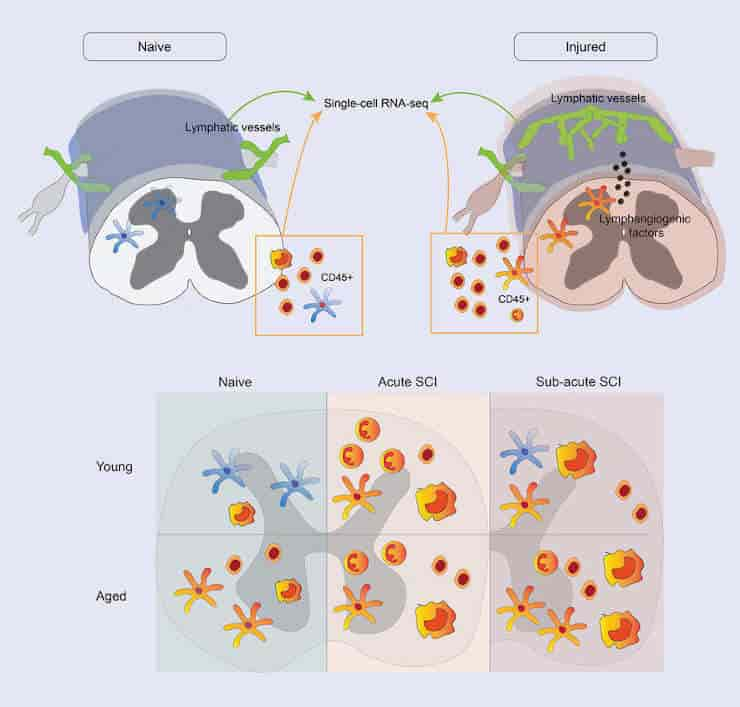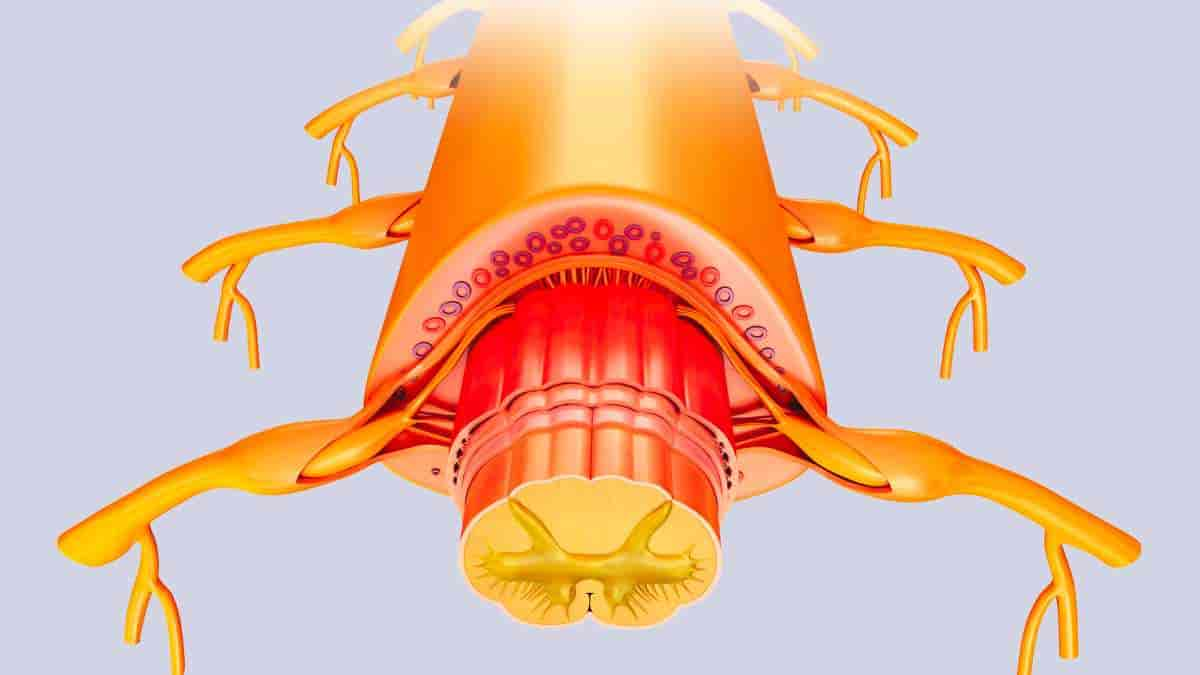Age diminishes the immune system’s capacity to respond to spinal cord injuries, according to a new study from researchers at the University of Virginia. This study identifies potential avenues for improving this response and aiding in the recovery of patients.
The results shed light on how the immune system responds to spinal cord injuries and why this response diminishes over time. In addition, they reveal that membranes surrounding the spinal cord play a significant role in initiating an immune response in response to injury.
“Our findings suggest in aging, there is an impairment in how the immune response is initiated and resolved, compared to young people. Hopefully, our results can help identify points of intervention and druggable targets that can improve recovery and address long-term consequences of injury, such as pain,”
said researcher Andrea Francesca M. Salvador.
Neuroimmunology and Spinal Cord Injury

Injury to the spinal cord can have devastating, lifelong consequences. Depending on the extent and location of the injury, they may render patients immobile or unable to control their bowels.
They are capable of causing pain, sexual dysfunction, and uncontrollable spasms. It is necessary to gain a deeper understanding of how the body responds to spinal cord injuries in order to develop more effective treatments.
The findings are the most recent from the laboratory of Jonathan Kipnis, who in 2015 made the startling discovery that the brain is connected to the immune system by vessels previously thought to be nonexistent. Prior to that, it was believed that the brain acted as a barrier to the immune system.
The discovery of vessels in the brain membrane, or meninges, rewrote textbooks and ushered in a new era of neurological research. Neuroimmunology, or the study of the relationship between the nervous system and the immune system, is now one of the hottest areas of neuroscience research, and it is poised to revolutionize our understanding of the brain and our ability to treat a wide range of neurological diseases.
Meningeal Lymphatic Patches
The recent research by Salvador, Kipnis, and colleagues revealed that the meninges surrounding the spinal cord play a crucial role in the immune response to spinal cord injury. They discovered the formation of previously unknown meningeal lymphatic “patches” above spinal cord injury sites.
More research is needed to determine what these structures do, but their formation indicates that the spinal cord meninges play an important role in the immune response to injury.
Salvador and her colleagues also measured how immune cells react to spinal cord injuries. They discovered that the response was much stronger in young lab mice than in older mice, implying that scientists may be able to target specific immune cells to improve recovery after spinal cord injuries.
The two findings, taken together, point to the spinal cord meninges and their interactions with other central nervous system components as new areas for researchers to investigate.
The Kipnis lab is now working with clinicians to better understand what is going on in human patients and how their findings can be used to make a real difference.
Reference:
- Andrea Francesca M. Salvador et al. Age-dependent immune and lymphatic responses after spinal cord injury. Neuron (2023). DOI: 10.1016/j.neuron.2023.04.011
